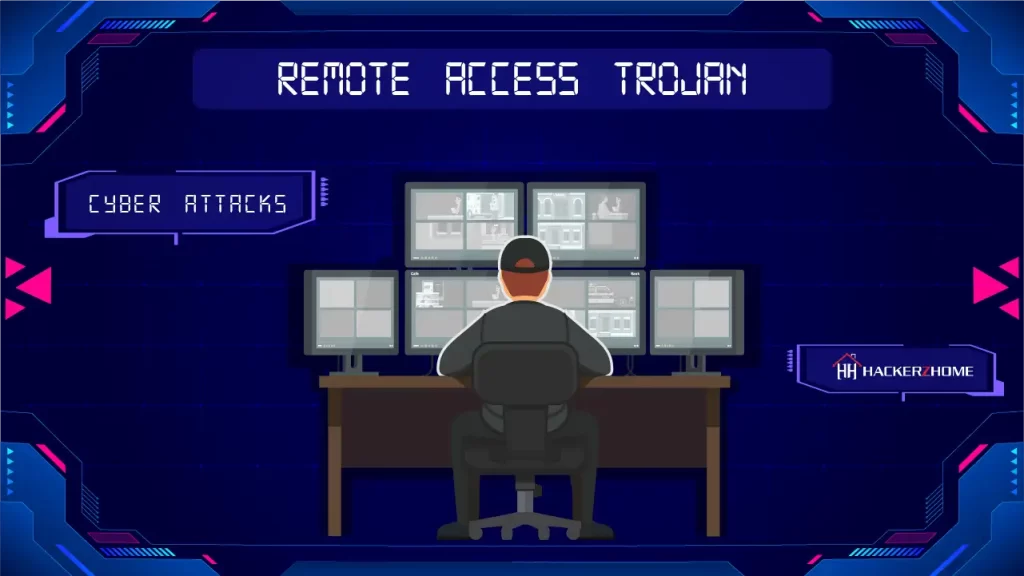Introduction:
We have learned that a computer network is an interconnection of 2 or more devices that
can establish communication between them to exchange information and share resources through our introduction article. This article will briefly discuss the main different types of networks and their characteristics.
Table of Contents
Computer networks are frequently put to use in the transfer of information from one computer system to another, and the way that these two systems connect is an important factor in determining how the network will operate. Most importantly, Networking knowledge is a must need for cybersecurity experts.
Types of Networks:
Do you know which network your house or place of business uses? If so, check out the list of the different types of widely used networks below to discover. So now we will be seeing how this interconnection is established and what are the different types of networks and the significance of these types of networks.
The most popular network types are
- LAN (Local Area Network)
- WAN (Wide Area Network)
- MAN (Metropolitan Area Network)
- PAN (Personal Area Network)
But along with these, we have 11 different types of networks. Let us discuss them one by one.
PAN (Personal Area Network):-
Do you remember? Before the evolution of the internet, we used to transfer photos, mp3 files, and a lot of other stuff using Bluetooth. Now that the technology is evolved we are using Bluetooth for connection with the devices like wireless headsets and speakers. This is an example of PAN.
So basically PAN is the smallest network designed to use peripheral devices for an individual. This network covers a small room or a small building. As we have already discussed, the most well-known PAN technology is Bluetooth. Not only Bluetooth but wireless printers, scanners, and television remotes are also examples of PAN.
The main significance of the PAN is to establish the connection between the devices, without being
connected to the internet.

Local Area Network(LAN):-
A local area network is a collection of 2 or more connected computers in confined spaces like a classroom, hospital, residence, etc.
A local area network (LAN) is used to connect two or more personal computers using communication means like a coaxial cable or twisted pair. LAN networks are widely used to share resources like shared hard drives, printers, as well as other devices.
It is less expensive because hubs, network adapters, and ethernet cables were used in its construction.
A local area network exchanges data at an incredibly quick rate. Greater security is provided by local area networks.
To achieve certain objectives, several network topologies, such as bus, star, and branching
tree can be implemented using coaxial cables, optical fiber cables, or twisted wire pairs.
With Wi-Fi or TCP/IP Ethernet, devices can share information and communicate over various
topologies.

Early LANs had data rates of 4 to 16 Mbps but Speeds today are typically 100 or1000 Mbps. In a LAN, the propagation delay is quite low. While larger LANs can support thousands of computers, the smallest LAN may only use two computers.
One of the computers in a network has the potential to function as a server to the other computers, known as clients. The remaining clients can use software that is kept on the server. It doesn’t need a lot of heavy routing and generally uses private IP addresses. TheLAN operates under a local domain that is centralized and managed.
In later sections, we’ll discuss what bus, star, and tree topologies, TCP/IP, and IP addressing mean.
Wireless Local Area Network(WLAN):-
In simple terms, a WLAN is a LAN that doesn’t use cables to connect to the network.
Therefore, a WLAN is what you use when using WiFi. WLANs are frequently used in the same settings as LANs; your preference for an on-premises or remote cloud solution will determine which (wires or wireless).
Did You know? Recently, Microsoft customer data was leaked.
A significant development in personal and business connectivity, wireless technologies now
offer a wide range of options, including mobile, fixed, portable, and infrared (IR) wireless. In these configurations, connected devices interact via a wireless local area network (WLAN).
Devices (also known as clients) can interact with one another via high-frequency transmissions, lasers, and infrared beams without the usage of electrical conductors (wires) thanks to WLANs.

Users can easily roam across a coverage area with this kind of flexible data connection since there is no requirement for wires to maintain network connectivity.
High data transfer rates are offered via WLAN, which typically operates in the 2.4 GHz or 5
GHz spectrum. Bluetooth gadgets, cordless phones, Wi-Fi radios, and garage door openers
are a few examples of devices that use a WLAN to operate in the 2.4 GHz range.
Laptops can be connected to the 5 GHz band if you want to trade off some signal strength for faster
speed on a WLAN.
Metropolitan Area Network(MAN):-
It was designed in the 1980s and It is a larger version of LAN. It also goes by the name MAN and
makes use of LAN-like technology.
It is intended to cover the whole city and It could be a way of joining several LANs together to form a larger network, or it could be a single wire. It is primarily owned and run by a single public or private company.
The Metropolitan Area Network is bigger than LANs but smaller than WANs in terms of
scale. Optical fibers, cables, etc. are utilized as a communication medium for MAN.
Like a cable TV network, the Metropolitan Area Network (MAN) typically covers the entire
city. Ethernet, Token-ring, ATM, or Fiber Distributed Data Interface are all possible architectures.
Users of this service can grow their local area networks. For instance, MAN can assist a company with connecting every office in a city.

High-capacity, high-speed fiber optics are the MAN’s backbone. Between local area networks and wide area networks, MAN works. MAN connects LANs to WANs or the internet.
A metropolitan area network connects various LANs to create a larger network that serves a greater geographic area. To communicate with the public and business sectors, government organizations use MAN.
In MAN, a telephone exchange line connects several LANs. RS-232,
Frame Relay, ATM, ISDN, OC-3, ADSL, and other protocols that are frequently used in MAN.
Its coverage area is wider than the Local Area Network’s (LAN)
MAN is intended for users who require fast connectivity.
In case you’ve missed: Introduction to Networking
MAN has a wide range of Mbps speeds. A Metropolitan Area Network is challenging to construct and maintain.
A MAN has less fault tolerance, and the network is also more congested. Furthermore, It is expensive and might or might not be owned by a single company.
MAN has a moderate data transfer rate and propagation delay. Data is transmitted through wire/cable and a modem through MAN.
A cable TV network in a city or the portion of the telephone company’s network that may
offer a customer a high-speed DSL line are examples of MANs.
Wide Area Network(WAN):-
Similar to LANs, you may be familiar with the word “WAN”. WANs connect more devices while carrying out the same function as LANs over a wider area. A WAN can remotely connect devices even when they are hundreds of kilometers apart. In actuality, the Internet, which links computers and other devices globally, is the most basic example of a WAN.
This type of network is often managed by numerous administrators due to its size, and ownership is split among several companies.
To interact and transmit data, LANs and other types of networks can use private lines, virtual private networks (VPNs), multiprotocol label switching (MPLS), wireless networks, cellular networks, and the internet.
A wide area network (WAN) is a sort of computer networking that is not geographically constrained and that offers access to multiple media through a specified provider.
MANs and LANs can connect to these networks. WANs need very expensive network equipment since they have a backbone with an extremely high speed.

WANs can be simple or hybrid, using shared circuits to connect point-to-point or packet-switched networks. Different connection types, such as virtual private networks (VPNs) and multiprotocol label switching are employed in the case of a hybrid WAN and SD-WAN (MPLS).
WAN communication routes frequently use a variety of different technologies, including fiber optics, FSO lines, routers, and I/O interfaces.
WANs are present everywhere in modern life, connecting cities, nations, and even space, even though they are frequently ignored. Examples of how far-reaching WANs have become include offering remote access to a company’s headquarters, enabling students to speak with peers on different continents, and real-time teleconferencing.
Companies like Tata communication even help with supplying WAN networks to their customers
WAN’s data rate is around ten times slower than LAN’s because of the larger distance and volume of servers, terminals, and other devices involved in WAN.
Finally, The range of WAN speeds is a few kilobits per second (Kbps) to megabits per second (Mbps). One of the main issues here is propagation latency, so satellites, microwaves, and optical fibers are the technologies utilized for wide-area network (WAN) data delivery.
Campus Area Network (CAN):-
Universities, colleges, and corporate campuses can connect several LANs from separate
departments sharing a common area via a campus area network (CAN). This unifies networks that would otherwise be dispersed into a network that offers access to information at incredible speeds while maintaining the necessary authentication to prevent privacy breaches.
CANs operate similarly to LANs but are smaller than these types of networks in terms of size. Wi-Fi, hotspots, and Ethernet technology are frequently used by users to connect to a
CAN with various devices.

Conclusion:
That’s enough for this article. Finally, All these types of networks are managed by the network Administrator in IT departments of big companies or government offices and The network administrators have to maintain the networks and make sure that they work. Let’s continue with the remaining types of networks in the next article till then stay tuned!












One Response
Nice education. Thanks.